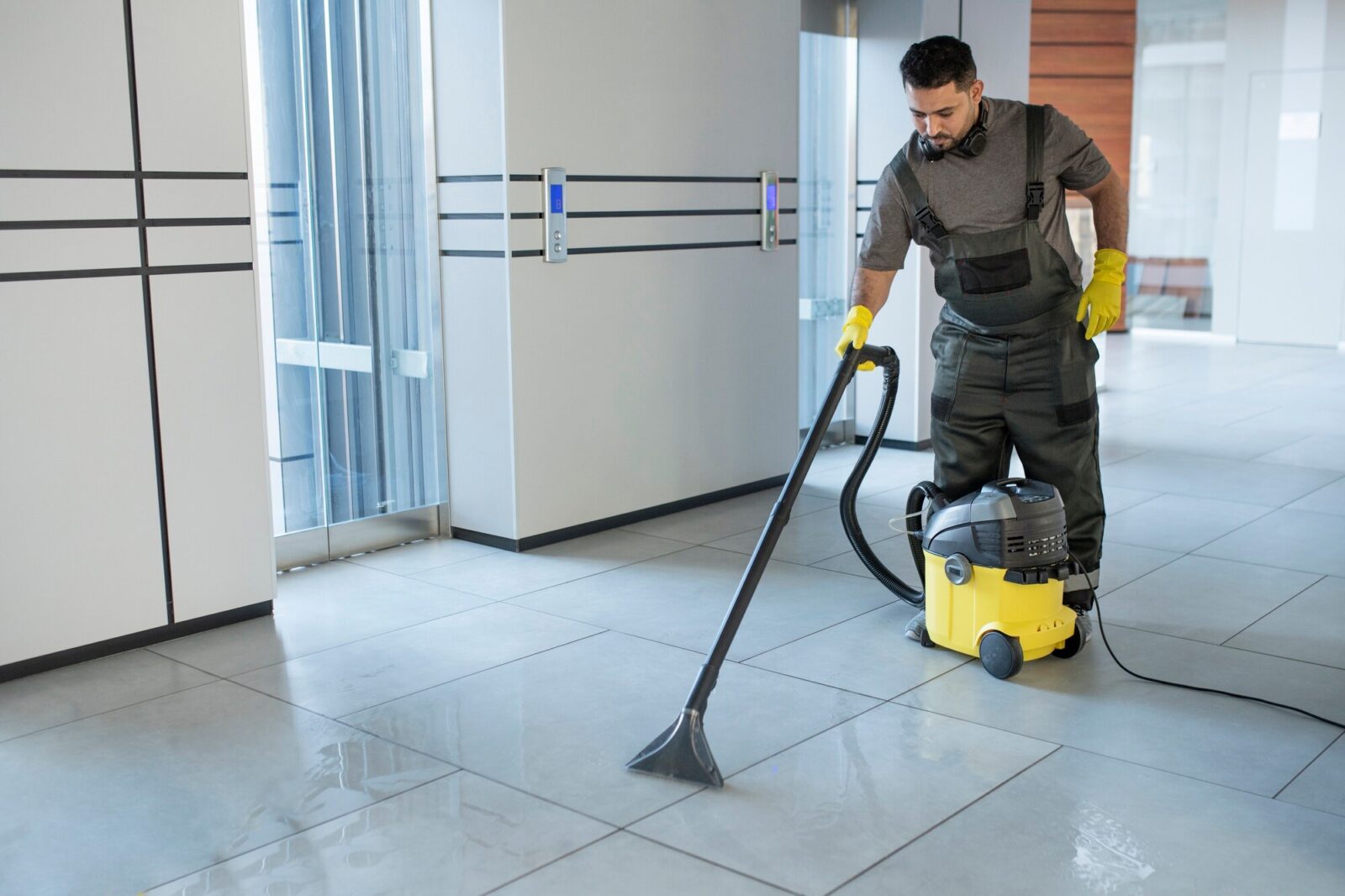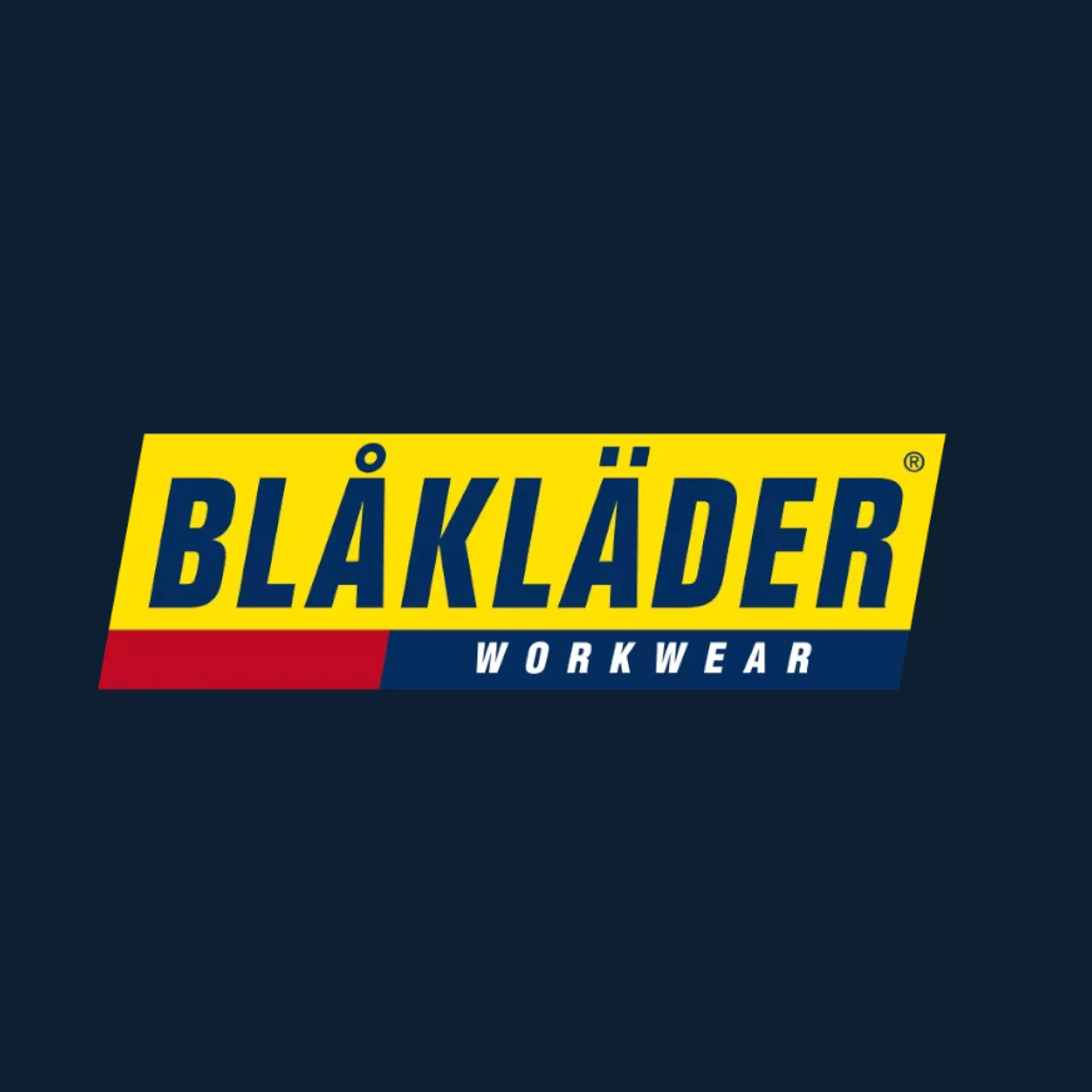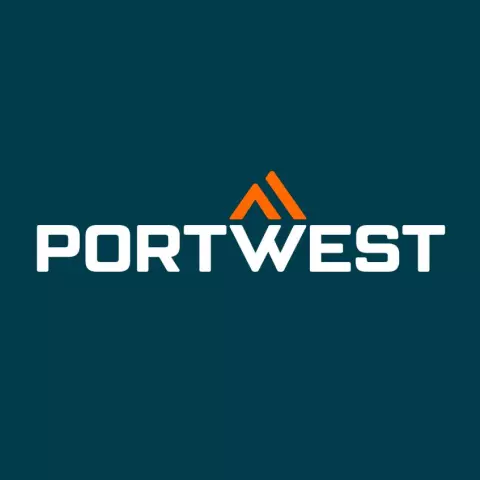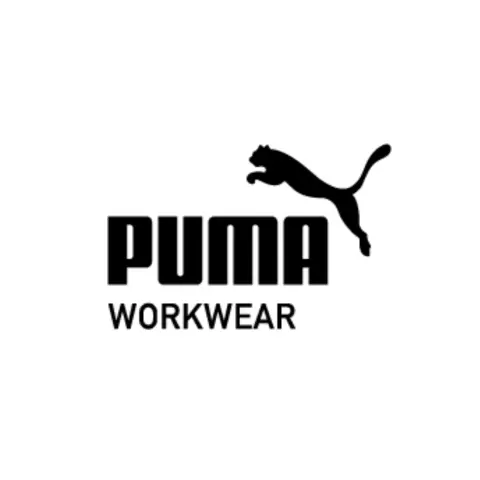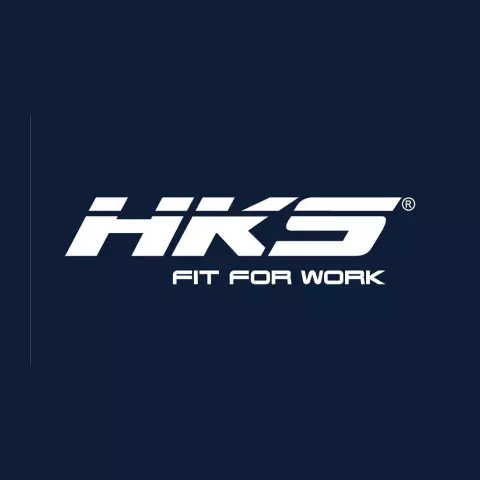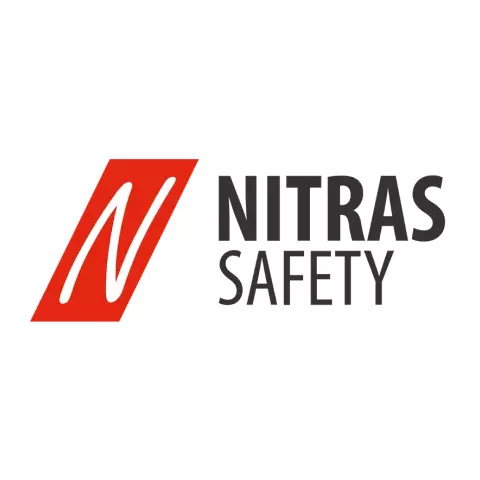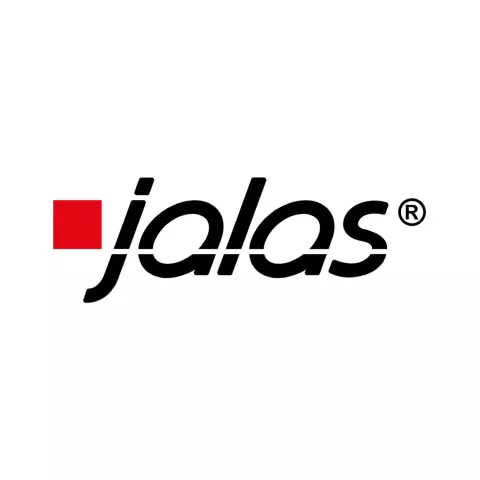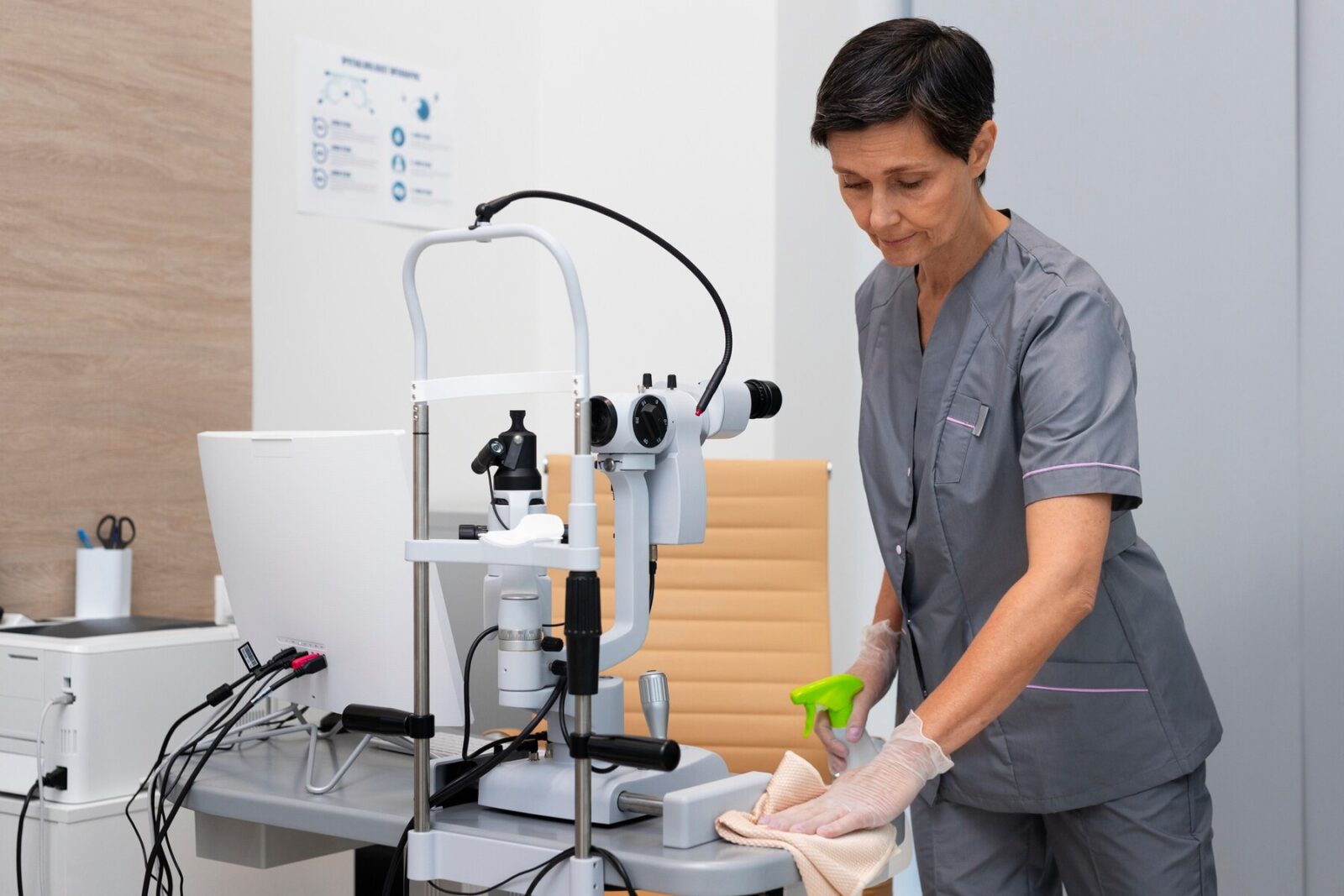För arbetstagarnas hälsa, säkerhet och effektivitet är det viktigt att hålla arbetsplatsen ren och fri från bakterier. I den här guiden får du lära dig hur du väljer hygienprodukter som uppfyller europeiska standarder, gör arbetsplatsen bättre och uppfyller hälso- och säkerhetsreglerna. Vi tar upp allt från juridiska frågor till de olika typer av varor som finns på marknaden och ger dig tydliga råd om hur du fattar de bästa besluten.
1. Varför hygien på arbetsplatsen är viktigt
Hygienen på arbetsplatsen spelar en avgörande roll för att minska sjukfrånvaron, förebygga sjukdomar och säkerställa en säker och trivsam miljö. Dålig hygien kan leda till att patogener sprids, vilket påverkar medarbetarnas välbefinnande och produktivitet negativt. Korrekta hygienprodukter bidrar väsentligt till att minska dessa risker genom att erbjuda de verktyg som krävs för effektiv rengöring, sanering och personlig vård.
2. Förståelse av europeiska standarder och förordningar
I Europa finns det olika bestämmelser som reglerar hygien och sanitet på arbetsplatsen. EU:s ramdirektiv om hälsa och säkerhet på arbetsplatsen föreskriver att arbetsgivaren ska tillhandahålla en säker och hälsosam arbetsmiljö. Detta inkluderar att säkerställa tillgång till hygienprodukter som minskar riskerna i samband med dålig sanitet.
Europeiska centrumet för förebyggande och kontroll av sjukdomar (ECDC) ger också riktlinjer för att kontrollera spridningen av smittsamma sjukdomar på arbetsplatsen, särskilt inom branscher som sjukvård, livsmedelsbearbetning och tillverkning där hygienen är avgörande. Arbetsgivarna bör välja produkter som uppfyller dessa lagstadgade standarder, vilket bidrar till att upprätthålla efterlevnaden och arbetstagarnas säkerhet.
3. Viktiga hygienprodukter för olika behov på arbetsplatsen
På grund av verksamhetens risker och behov har varje arbetsplats sin egen uppsättning regler för renlighet. Här är de viktigaste typerna av rengöringsprodukter som används inom många olika områden:
Produkter för handhygien
Att rengöra händerna är en viktig del av att stoppa spridningen av bakterier. Vad ska finnas i produkterna?
- Tvål: För att förhindra att bakterier sprids är flytande tvål eller skumtvål oftast bättre än tvålar på arbetsplatsen.
- Handdesinfektionsmedel: Handdesinfektionsmedel med 60 % alkohol eller mer är användbara på platser där tvål och vatten inte är lätt att få tag på.
- Toalettpapper och handtorkar: Pappershanddukar föreslås ofta eftersom de är bra på att få bort bakterier. Men i många miljöer är handtorkar med HEPA-filter också ett bra alternativ.
Desinfektions- och rengöringsmedel för ytor
Att hålla ytorna rena minskar risken för infektioner och bidrar till en säkrare miljö. Olika typer av ytrengöringsmedel är t.ex:
- För regelbunden rengöring av ytor som ofta hanteras, t.ex. skrivbord, bänkskivor och dörrhandtag, är desinfektionssprayer och -servetter mycket användbara.
- Starkare rengöringsmedel mot oljor och smuts krävs på platser där det finns tunga maskiner eller industriell utrustning.
Personlig skyddsutrustning (PPE)
I branscher där det finns stora risker för exponering är personlig skyddsutrustning mycket viktig. Typisk personlig skyddsutrustning består av:
- Engångshandskar är tillverkade av latex, vinyl eller nitril beroende på branschstandard.
- Kirurgiska masker, andningsskydd och ansiktsskydd krävs inom sjukvården och andra högriskbranscher för att skydda personalen från luftburna föroreningar.
Produkter för toaletter
Toaletterna måste hållas fyllda med lämpliga material för att främja renlighet:
- Toalettpapper och mjukpapper: Viktigt för grundläggande sanitet.
- Särskilt i gemensamma utrymmen är sanitära avfallshanteringsenheter viktiga för att bevara diskretion och renlighet.
- Även om luftkvalitetshanteringssystem är lika värda att tänka på, kan du hjälpa till att hålla en trevlig miljö genom att använda luftfräschare och deodoranter.
4. Val av hygienprodukter med hänsyn till användningsfrekvens och storlek på arbetsplatsen
Ditt val av hygienprodukter beror på storleken på ditt företag och antalet anställda. Mer fasta artiklar eller större mängder kan behövas i områden med hög trafik för att garantera kontinuerlig tillgänglighet. Överväganden inkluderar:
Områden med hög efterfrågan
Tvåldispensrar med stor kapacitet, handspritstationer och regelbunden påfyllning av rengöringsmaterial är absolut nödvändiga i hektiska miljöer som fabriker eller öppna kontorslandskap. Automatiserade dispensrar minskar dessutom antalet beröringspunkter och hjälper till att kontrollera den höga förbrukningen.
Mindre arbetsplatser
Små hygienalternativ som inte tar upp mycket plats fungerar bra för mindre team. Oftast räcker det med mindre muggar och refillförpackningar som inte tar upp mycket plats.
5. Produktkvalitet och effektivitet
Att skaffa bra rengöringsprodukter är det bästa sättet att hålla sig ren och frisk. När du handlar, försök att hitta saker som har visat sig döda virus och bakterier. Många handdesinfektionsmedel och rengöringsmedel säger att de blir av med bakterier och virus. Detta är mycket viktigt i områden som livsmedelsberedning, sjukvård och andra liknande.
För att kontrollera kvaliteten på en produkt är det viktigt att se certifieringar som CE-märket, som visar att den uppfyller europeiska hälso-, säkerhets- och miljöskyddsstandarder. Du bör också tänka på namn som har ett rykte om sig att genomgående hålla hög kvalitet och vara pålitliga.
6. Kostnadseffektivitet och budgetering
Hygienprodukter för arbetsplatsen är en utgift som måste göras, men kvaliteten kan bibehållas utan att bli sämre. Saker som handtvål, handservetter och pappershanddukar kan köpas i bulk och spara pengar. Du bör dock hitta en balans mellan pris och kvalitet. Att skära ner på nödvändiga varor kan göra dem mindre användbara, vilket skulle skada säkerhetsarbetet.
Många leverantörer erbjuder abonnemangsmodeller eller mängdrabatter, vilket kan förenkla beställningen och minska risken för att viktiga artiklar tar slut.
7. Miljövänliga och hållbara alternativ
Hållbarhet blir allt viktigare på arbetsplatserna i Europa. Miljövänliga hygienprodukter minskar miljöpåverkan samtidigt som de stöder initiativ för företagsansvar. Leta efter produkter som:
- Använd återvinningsbara eller biologiskt nedbrytbara material (t.ex. pappershanddukar och förpackningar).
- Är fria från starka kemikalier som kan skada miljön.
- Har certifieringar, till exempel EU Ecolabel, som identifierar produkter som uppfyller höga miljöstandarder.
Att byta till miljövänliga hygienprodukter främjar inte bara hållbarhet utan kan också förbättra företagets image bland kunder och anställda som prioriterar miljöansvar.
8. Val av leverantör och tillförlitlighet
Genom att välja en pålitlig leverantör kan du vara säker på att du alltid kommer att kunna få de hygienprodukter du behöver. Hitta företag som kan ge dig:
- Leverans i rätt tid: Ett jämnt lager och påfyllning i rätt tid är viktigt, särskilt för artiklar med hög omsättningshastighet.
- Produktvariation: Välj leverantörer som erbjuder ett brett sortiment av produkter som passar olika hygienbehov.
- Tydlig produktinformation: Öppenhet kring produkternas ursprung, tillverkningsstandarder och certifieringar är avgörande för att säkerställa efterlevnad och kvalitet.
Undersök kundrecensioner, be om rekommendationer eller kontrollera ackrediteringar för att säkerställa att din leverantör är seriös.
9. Implementering av hygienrutiner på arbetsplatsen
Att ha rätt material är bara halva jobbet. För att se till att de används och underhålls på rätt sätt måste du också följa en renlighetsrutin. Några förslag på åtgärder är:
- Regelbunden utbildning: Utbilda medarbetarna i hygienrutiner, t.ex. korrekt handtvätt, sanering och användning av personlig skyddsutrustning.
- Schemalagd städning: Ställ in ett städschema baserat på arbetsplatsens specifika behov, med fokus på områden som utsätts för mycket slitage.
- Tillgänglighet: Placera hygienprodukter i lättillgängliga utrymmen, t.ex. entréer, toaletter och gemensamma utrymmen, för att uppmuntra till regelbunden användning.
10. Övervakning och omprövning av hygienbehov
Behoven på arbetsplatsen kan förändras över tid, särskilt när nya hälsostandarder kommer ut. Kontrollera ofta dina rengöringsprodukter och -metoder för att se till att de fortfarande är effektiva och i linje med gällande regler. En regelbunden översyn av inventarier, feedback från medarbetare och eventuella uppdateringar av regelverket kan bidra till att upprätthålla en ren och säker arbetsplats som uppfyller kraven.
11. Slutsatser
Att välja rätt hygienprodukter för din arbetsplats är avgörande för att främja en säker, hälsosam och produktiv miljö. Genom att förstå specifika behov, följa europeiska bestämmelser och prioritera kvalitet kan företag införa effektiva hygienrutiner som gynnar alla på arbetsplatsen. Kom ihåg att se över och uppdatera hygienrutinerna regelbundet för att hålla jämna steg med branschstandarderna och säkerställa ett kontinuerligt skydd för alla anställda.
